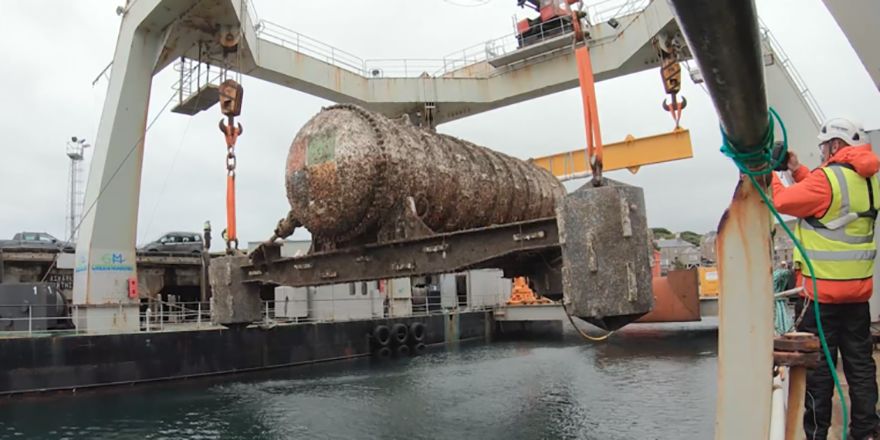
Earlier this summer, marine specialists reeled up a shipping-container-size data centre coated in algae, barnacles and sea urchins from the seafloor of the
European Marine Energy Centre’s Billia Croo test site, located off Scotland’s Orkney Islands.
The retrieval launched the final phase of a two-year project that proved the concept of underwater data centres is feasible, as well as logistically, environmentally and economically practical.
Microsoft’s Project Natick team deployed the Northern Isles data centre 117ft deep to the seafloor in spring 2018 and then constantly tested and monitored the performance and reliability of its servers.
The team proposed that a sealed container on the ocean floor could provide ways to improve the overall reliability of data centres. On land, corrosion from oxygen and humidity, temperature fluctuations and bumps and jostles from people replacing broken components are all variables that can contribute to equipment failure.
The Northern Isles deployment confirmed their view, which could have implications for data centres on land.
Lessons learned from Project Natick are also informing Microsoft’s data centre sustainability strategy around energy, waste and water, according to Ben Cutler, a project manager in Microsoft’s Special Projects research group who leads Project Natick.
He says that the proven reliability of underwater data centres has prompted discussions with a Microsoft team in Azure that is s looking to serve customers who need to deploy and operate tactical and critical data centres anywhere in the world.
William Chappell, vice president of mission systems for Azure, said: “We are populating the globe with edge devices, large and small. To learn how to make data centres reliable enough not to need human touch is a dream of ours.”
The underwater data centre concept first surfaced at Microsoft in 2014 during
ThinkWeek, an event that gathers employees together to share out-of-the-box ideas. The concept was considered a potential way to provide lightning-quick cloud services to coastal populations and save energy.
More than half the world’s population lives within 120 miles of the coast. By putting data centres underwater near coastal cities, data would have a short distance to travel, leading to fast and smooth web surfing, video streaming and game playing.
The consistently cool sub-surface seas also allow for energy-efficient data centre designs. For example, they can leverage heat-exchange plumbing such as that found on submarines.
Microsoft’s Project Natick team proved the underwater data centre concept was feasible during a 105-day deployment in the Pacific Ocean in 2015. Phase II of the project included contracting with marine specialists in logistics, ship building and renewable energy to show that the concept is also practical.
Mr Cutler said: “We are now at the point of trying to harness what we have done as opposed to feeling the need to go and prove out some more. We have done what we need to do. Natick is a key building block for the company to use if it is considered appropriate.”
The Northern Isles underwater data centre was manufactured by Naval Group and its subsidiary Naval Energies, experts in naval defence and marine renewable energy. Green Marine, an Orkney Island-based firm, supported Naval Group and Microsoft on the deployment, maintenance, monitoring and retrieval of the data centre, which Microsoft’s Special Projects team operated for two years.
The Northern Isles was deployed at the European Marine Energy Centre, a test site for tidal turbines and wave energy converters. Tidal currents there travel up to 9 miles per hour at peak intensity and the sea surface roils with waves that reach more than 60ft in stormy conditions.
The deployment and retrieval of the Northern Isles underwater data centre required atypically calm seas and a choreographed dance of robots and winches that played out between the pontoons of a gantry barge. The procedure took a full day on each end.